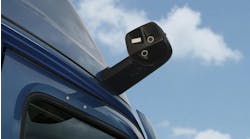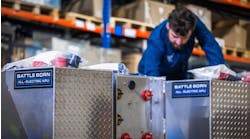In 2018, the ASE Education Foundation surveyed current and former automotive students to learn how many went on to careers in the automotive service industry. Results showed that over 40% of graduates either never went to work in the industry or left within a couple of years. Many of them were employed in other technical trades, but many were either unemployed or working in retail/food service, etc.
Our industry is full of great job opportunities, so how are we failing to attract and keep these students? There is no shortage of students studying auto, truck, and collision repair. A separate survey indicates that there are over 100,000 students nationwide in high school and college programs accredited by ASE. This contradicts a popular belief that the current generation is not willing to work with their hands. The inescapable conclusion is that we have a leaky pipeline, where many students either plan to pursue a career in a different field or go to work in the transportation service industry but leave within a short time.
The ASE Education Foundation repeated the survey in May, but this time with a deeper dive to learn the reasons students do not pursue or stick with a career in automotive service. The 2021 survey results confirmed many findings from 2018. First, students in programs accredited by ASE are more likely to feel well-prepared for their careers, earn ASE credentials, and enter the industry versus their counterparts from non-accredited programs. This means that ASE program accreditation makes a real difference in outcomes for a lot of graduates.
Among all graduates who did not choose to go into automotive service, reasons that pushed them away from the industry outpaced the reasons that pulled them toward other career fields. Lack of skills, lost interest, and could not find a job were frequently cited reasons. They took automotive training classes but were never fully engaged in the industry early on. That made it easy for them to look elsewhere. That is the first leak in the pipeline.
What can fleets do to address this leak? First, support local schools and make sure they are ASE-accredited. That means getting involved, both as a member of the school’s Industry Advisory Committee (they all have one; it is required) and sharing the career opportunities available in your business. Speaking to the students and providing job-shadowing opportunities are easy, low-cost ways to do this.
A separate survey of high-school automotive students showed what a difference this can make. 30% of those not taking the class the following year said they do not see a career path. In the same survey, only 27% of students said their classes had been visited by a local employer. If we do not promote our industry’s many career opportunities, who will? Instructors and career counselors may help out, but the message is more believable and impactful coming from an actual employer or working technician.
A substantial number of students who do join the industry after graduation leave within just a couple of years. Again, reasons that pushed those workers out dominated reasons that pulled them elsewhere. Key reasons included low wages, management conflicts, and lost interest. This is the second leak in the pipeline.
Fleets may have experienced the other side of this coin; they hired an entry-level tech after graduation, but they did not stay. Perhaps they lacked hands-on experience and were not very productive, so they were assigned the lowest skilled jobs and the fleet could not afford to pay them much. They may have had high expectations when they graduated and were not prepared for the real world of work. It is not surprising that many of them do not last and leave the industry permanently.
Some in the industry accept these leaks, saying that entry-level technicians must pay their dues. Others counter, saying we are “eating our young.” Is there a solution? The 2021 survey gives us some important clues and reasons to hope. The key is something the education community calls work-based learning (WBL). WBL can take different forms such as internships, apprenticeships, or co-ops. These are more than simply working part-time while in school. WBL programs have structure so that students are working on a variety of tasks that directly relate to the various systems and technologies they are studying in school.
WBL students work hand-in-hand with mentors—experienced working technicians—who help them get real experience on different systems. This takes more coordination than simply assigning students to perform the same basic PM tasks over and over, but the advantages are substantial. Students can grow their skill set while immersed in the culture of the repair shop and learn what it takes to successfully service vehicles as part of a working team.
“To truly set people up for success, we need to address this critical shortage of qualified technicians with a triangle approach,” said Arica Jackson with UPS Automotive. “First, education via career and technical centers and/or our community college system. Second, mentorship-based employer engagement to allow people to actually put into practice what they have learned. Third, membership in organizations such as ATA’s Technology & Maintenance Council (TMC) to provide camaraderie and exposure to the career lattice opportunities within this industry.”
The 2021 survey results bear this out. 62% of graduates who are still in the industry participated in WBL while they were in school, compared to only 47% of graduates not in the industry. Nearly all found it helpful in preparing them for their career. Notably, students from ASE-accredited programs were more likely to participate in WBL (64%) than those from non-accredited programs (52%).
Why does WBL make such a difference? First, everyone wants to be part of a team, do something that matters, and see a career path for themselves. Working in the shop helps students learn the business and progress to doing substantial work. Second, these students graduate with a larger skill set and are likely to be more productive right out of school. That means they can earn more early in their careers and we can compete on wages with other industries.
“Technician engagement is critical in the first one to two years of employment after matriculation from post-secondary institutions of learning,” stated Robert Braswell, executive director, TMC. “Without proper engagement, including work-based learning, the investments that students make in themselves and that employers make in their newest employees are at great risk. The solution is a comprehensive plan that involves seamless partnership between schools, employers, and students [or entry-level technicians] that provides the student a clear career development pathway with mentoring opportunities to reinforce what it is the employer wants to impart on the trainee. Organizations such as TMC and ASE can, and do, play a key role in helping these parties best interact by providing recommended practices in these areas.”
The pathway to retention
If we want to stop the leaks in the pipeline, there are two major steps we can take to support the current students that want to become our future workforce
First, get involved with local schools and make sure they are ASE-accredited. If not, the members of the Industry Advisory Committee can work with instructors and administrators to earn accreditation. That ensures students are being instructed on the tasks that really matter to the industry and provide them with the foundation for a solid career
Second, go beyond speaking and job-shadowing, and in partnership with your local schools, start a WBL program and hire students to do meaningful work in your business while they are still learning. The ASE Education Foundation is actively working with partners across the country, implementing solutions from internships to registered apprenticeships, and we are here to help.
“Work-based learning is a little tough to accommodate without employer engagement,” said Kenneth Calhoun, fleet optimization manager at Altec Service Group and past chairman of TMC. “Sitting quietly eating pizza during two program advisory committee meetings a year does not equal engagement. We have to come to the table with paid internships, or better yet, pre-apprenticeship and apprenticeship models. The perfect world would be in coordination with our career and technical education centers and our community college system so that the pipeline is complete and doesn’t leak.”
Working with national partners such as the ASE Education Foundation and TMC, and local partners like area high schools and colleges, along with other service businesses, we have the tools to solve our technician shortage. It will take work but is within our grasp. Take hold of those tools and put them to work to fix the leaky pipeline and ensure the continued flow of new entry-level technicians that we all need.
This article originally appeared on Fleet Maintenance.



